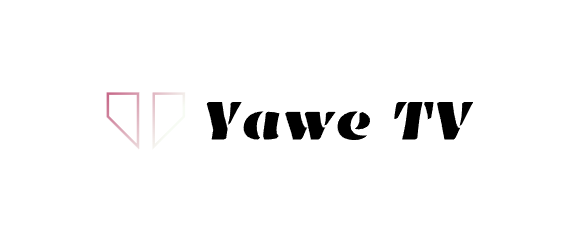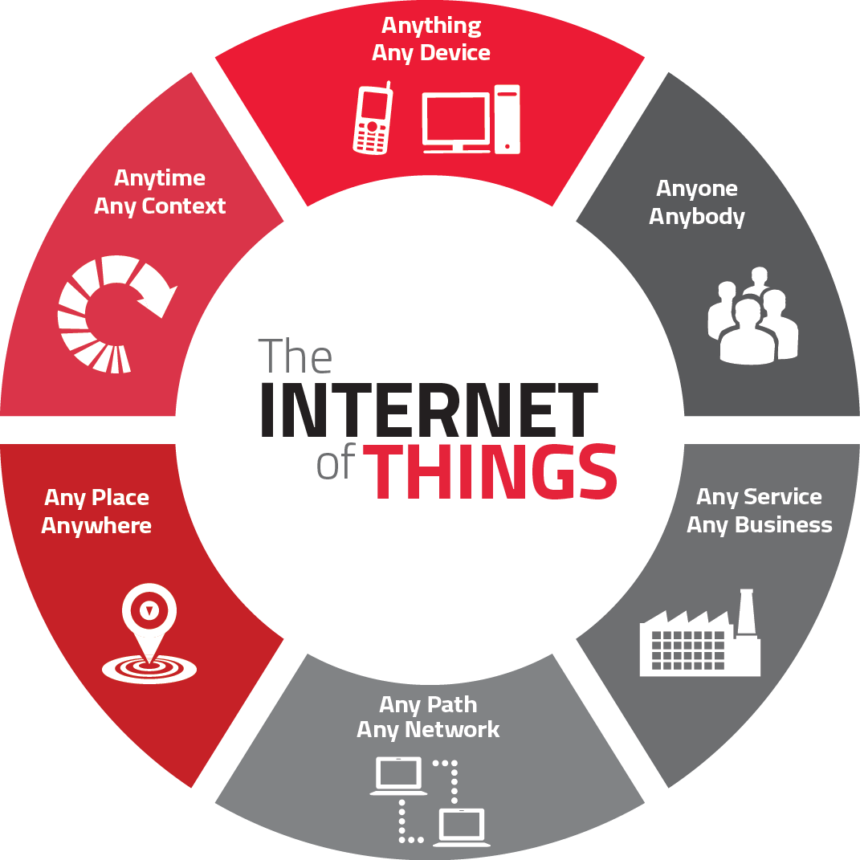The Internet of Things (IoT) has rapidly become one of the most transformative technologies in the world today. From the way we communicate and interact with devices to how industries function, the IoT is reshaping the fabric of our daily lives.
As our homes, workplaces, cities, and even vehicles become increasingly interconnected, it’s important to understand the profound impact IoT has on everyday life. This article delves into the Internet of Things (IoT), exploring its development, applications, and the advantages and challenges it brings.
What is the Internet of Things (IoT)?
At its core, the Internet of Things (IoT) refers to a network of physical objects—devices, vehicles, appliances, and even animals that are embedded with sensors, software, and other technologies. These objects collect and exchange data over the internet, making it possible for them to interact with each other and with human users. The goal of IoT is to improve efficiency, enhance convenience, and unlock new opportunities in almost every sector of society.
The concept of IoT is not entirely new. Early iterations of interconnected devices can be traced back to the 1990s. However, it was only in the 2000s, with the proliferation of wireless internet, that the concept truly began to gain traction. As internet connectivity became more widespread, the potential for IoT to revolutionize everything from agriculture to healthcare, transportation, and urban infrastructure grew exponentially.
How IoT Works
The IoT operates on a simple principle: devices collect and exchange data. These devices use sensors to gather information about their environment, which is then transmitted over the internet to a central system. This system processes the data and may trigger specific actions or send notifications to users. The interaction can also be bi-directional, with users sending commands to IoT-enabled devices for further action.
One example of this technology in action is a smart thermostat. This device can sense the temperature in your home, communicate with other smart devices, and adjust the heating or cooling settings accordingly. It may also send data to an app on your phone, allowing you to control the temperature remotely.
For IoT to function effectively, devices rely on several technologies, including wireless communication (Wi-Fi, Bluetooth, 5G), cloud computing, and data analytics. These technologies allow IoT devices to process and store vast amounts of data, making real-time decision-making possible.
The Evolution of IoT: From Concept to Reality
While the concept of IoT might seem futuristic, it has become a reality in many areas of our daily lives. The first wave of IoT devices focused on consumer convenience. For example, smart home products like security cameras, lighting systems, and voice-activated assistants began appearing on the market. These devices used sensors and internet connectivity to improve everyday life by adding automation and remote control capabilities.
Over time, the adoption of IoT expanded into other sectors, such as healthcare, agriculture, and transportation. In healthcare, IoT-enabled devices allow doctors to remotely monitor patients, providing more personalized care and reducing the need for hospital visits. In agriculture, IoT devices can monitor soil moisture levels and weather conditions, optimizing crop growth and reducing water waste. Similarly, IoT is being utilized in transportation with vehicles that can communicate with each other and the road infrastructure to improve safety and reduce traffic congestion.
Key Applications of IoT in Everyday Life
The impact of IoT on daily life is vast, with applications touching nearly every aspect of society. Let’s explore some of the most common and revolutionary uses of IoT in different areas.
1. Smart Homes and Automation
One of the most noticeable applications of IoT is in the realm of smart homes. From lighting systems and security cameras to smart refrigerators and washing machines, IoT has transformed the way we interact with our living spaces. Smart thermostats like the Nest, which adjust room temperatures based on your preferences and habits, or smart locks that allow you to control your home’s entry points remotely, are prime examples of how IoT enhances daily living.
Additionally, smart speakers like Amazon Echo and Google Home provide hands-free control over various aspects of a home, from music selection to adjusting thermostats and controlling lights. These devices use voice recognition technology, making it easy for users to interact with them without needing to press a button or use a smartphone.
2. Healthcare and Wellness
In the healthcare industry, IoT has opened new doors for patient care, remote monitoring, and personalized treatment. Wearable devices such as fitness trackers, smartwatches, and medical monitors track vital signs, physical activity, and even sleep patterns. These devices gather data that can be shared with healthcare professionals, allowing them to monitor patient health in real-time, often preventing medical emergencies or ensuring timely interventions.
More advanced IoT devices are used for continuous glucose monitoring, heart rate monitoring, and even managing chronic conditions such as asthma and COPD. In hospitals, IoT-enabled equipment helps improve patient safety by monitoring everything from medication dosages to patient movements, reducing errors, and improving care outcomes.
3. Transportation and Smart Cities
The Internet of Things also plays a crucial role in transforming transportation systems and urban infrastructure. In cities, IoT-powered solutions are used to optimize traffic flow, monitor air quality, and manage public transportation systems more effectively. Smart traffic lights adjust their timing based on real-time traffic data, reducing congestion and promoting efficient traffic flow.
In the automotive industry, IoT has contributed to the development of autonomous vehicles, connected cars, and advanced driver assistance systems (ADAS). These systems use sensors and real-time data to enhance vehicle safety, enable features like automatic parking, and even allow cars to communicate with each other to avoid accidents.
Moreover, IoT plays a significant role in public transportation systems, enabling real-time tracking of buses and trains, providing passengers with up-to-the-minute arrival times and route information.
4. Agriculture and Environmental Monitoring
Agriculture is another sector where IoT is making significant strides. IoT-based solutions allow farmers to monitor crop health, soil moisture, weather conditions, and pest activity in real-time. With this data, they can make more informed decisions regarding irrigation, fertilization, and pest control, ultimately leading to higher crop yields and more sustainable farming practices.
Environmental monitoring is another important application of IoT, with sensors deployed in forests, oceans, and cities to track air and water quality, temperature, and pollution levels. This data can be used to address environmental concerns, inform policies, and prevent ecological damage.
5. Retail and Consumer Experiences
In the retail industry, IoT is transforming the way businesses interact with consumers. Smart shelves that track inventory levels in real time, personalized advertisements based on consumer preferences, and the ability to make purchases via smart devices are all powered by IoT technologies. Retailers can use data gathered from IoT devices to optimize their operations, reduce waste, and enhance the shopping experience for customers.
In some stores, customers can even use their smartphones to pay for items, eliminating the need for physical checkout processes altogether. This not only speeds up transactions but also provides retailers with valuable data on customer buying behavior, enabling them to offer more targeted promotions and advertisements.
The Benefits of IoT
The Internet of Things offers a wide range of benefits, both for individuals and industries alike. Let’s explore some of the most significant advantages IoT brings.
1. Increased Efficiency and Automation
One of the primary benefits of IoT is its ability to automate tasks and processes. For example, in the home, smart lighting systems automatically turn off when no one is around, reducing energy consumption. In manufacturing, IoT sensors can predict when equipment is likely to fail, allowing for preventative maintenance, minimizing downtime, and increasing productivity.
2. Improved Decision Making
IoT provides access to vast amounts of real-time data, allowing for more informed decision-making. In business, IoT-enabled devices can help optimize inventory, predict demand, and improve supply chain management. For healthcare providers, real-time patient data enables them to make timely interventions and personalize treatment plans.
3. Enhanced Convenience and Personalization
IoT-powered devices offer users an unprecedented level of convenience. For example, smart refrigerators can alert you when you’re running low on groceries, while fitness trackers can give personalized recommendations based on your activity levels. By learning your habits and preferences, IoT devices create a more personalized and efficient experience.
4. Cost Savings
IoT devices can help reduce costs in several areas. In homes, smart thermostats can optimize energy usage, reducing heating and cooling costs. In industries like agriculture, IoT-powered sensors allow farmers to optimize irrigation, saving water and reducing energy costs. Moreover, predictive maintenance in manufacturing ensures that equipment lasts longer, reducing repair and replacement costs.
The Challenges of IoT
While IoT offers numerous benefits, it also presents several challenges that need to be addressed.
1. Security and Privacy Concerns
As more devices become connected, the potential for cyberattacks and data breaches increases. IoT devices often collect sensitive information, such as personal health data or location data, making them attractive targets for hackers. Ensuring robust security measures, such as encryption and regular software updates, is essential to protecting users’ privacy.
2. Data Management and Storage
The sheer volume of data generated by IoT devices can be overwhelming. Proper data management and storage solutions are crucial to making sense of this information and ensuring that it is used effectively. Without the right infrastructure in place, managing and analyzing IoT data can become a logistical nightmare.
3. Standardization Issues
IoT devices come from a variety of manufacturers, and there is currently no universal standard for how these devices should communicate with one another. This lack of standardization can result in compatibility issues, making it harder for devices from different brands to work together seamlessly.
4. Environmental Impact
While IoT promises increased efficiency, the environmental impact of producing and disposing of IoT devices should not be overlooked. The constant creation of new devices contributes to electronic waste, which can harm the environment if not disposed of properly. Additionally, the energy consumption of IoT devices, especially when scaled globally, may contribute to carbon emissions.
The Future of IoT: What’s Next?
The Internet of Things is still in its early stages, and its full potential has yet to be realized. As technology advances, we can expect IoT to become even more deeply integrated into our lives. The rise of 5G networks will provide faster and more reliable connections, enabling even more IoT devices to come online and communicate with each other in real-time.
Moreover, innovations in artificial intelligence (AI) and machine learning will enable IoT devices to become smarter, learning from data and improving their performance over time. We are likely to see more autonomous systems, from self-driving cars to AI-powered healthcare devices that can diagnose and treat illnesses without human intervention.
In addition, the growth of IoT will likely drive new business models, with companies offering IoT-as-a-Service or developing IoT-enabled platforms that allow third-party developers to create custom applications for specific industries.
Conclusion
The Internet of Things (IoT) is not just a buzzword—it is a powerful technology that is revolutionizing the way we live, work, and interact with the world around us. From enhancing the convenience of our homes to transforming industries like healthcare, agriculture, and transportation, IoT is driving significant changes that will continue to shape our future.
As we move forward, it is crucial that we embrace the benefits of IoT while addressing the challenges it presents, particularly regarding security and privacy. With the right approach, IoT has the potential to unlock new opportunities, improve efficiency, and create a more interconnected world.
The Internet of Things is here to stay, and its influence on our daily lives will only continue to grow. Whether we’re talking about smarter homes, better healthcare, or more efficient transportation, IoT is transforming the way we experience the world around us—one connected device at a time.

